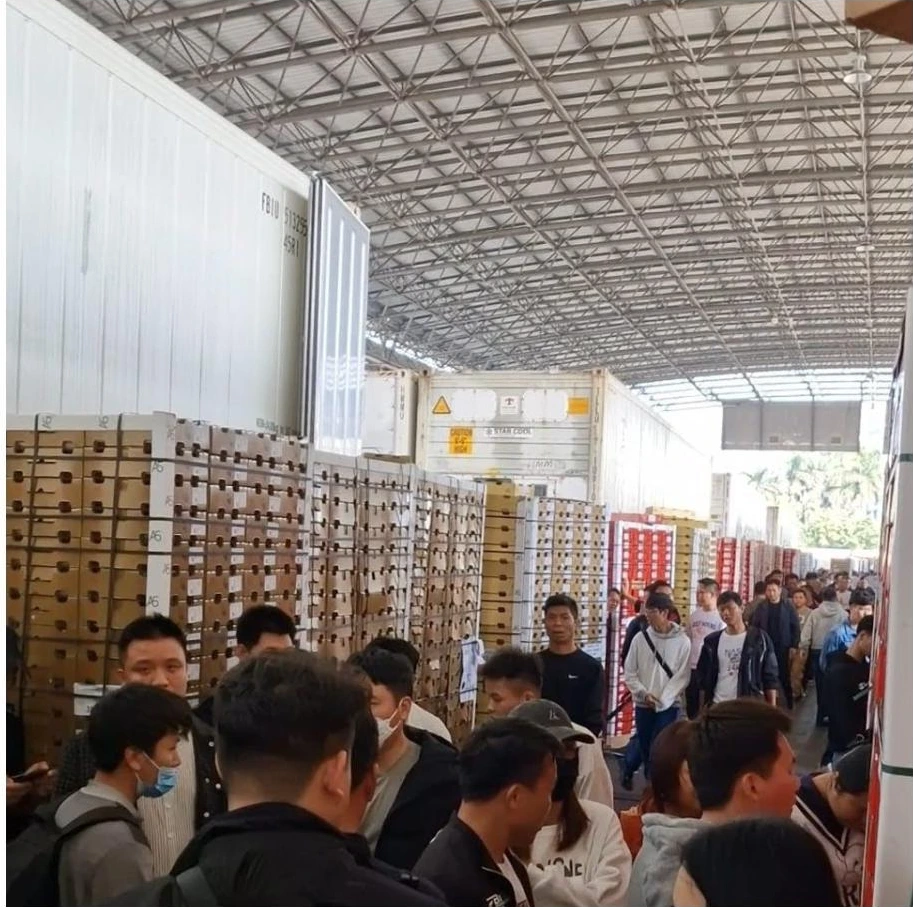Despite the climatic events and the lower volume of Chilean cherries expected by the industry for the 2023-2024 campaign, the quality of the fruit was better than last season. In an interview with Mundoagro, Walter Masman, a leading international consultant specialising in cherry trees, says that 'because the trees had less potential, we got better fruit quality. As long as the trees are regulated in their load at an early stage, we can have a good product".
"This year the growers had a lower yield potential, but they got a higher size curve, where profitability improved because the size compensated for the rest. Therefore, demand increased and the cherry was sold at a better price."
According to the agronomist of the Pontificia Universidad Católica de Valparaíso (PUCV), one of the main problems affecting the current season was the weather, which affected not only cherries but also crops such as peaches, nectarines and plums. "The climatic events have caused uneven fruit and volume losses, generating the scenario that is unfolding today," he says.
"The previous estimate for Chile was 100 million cases of cherries, but in the end it will be around 80 million. The climate issue has a common denominator associated with a lack of cold weather accumulation and this pattern has been reflected from the fourth to the tenth region'.
"It is a pattern that also has to do with a very unstable spring, which led to less fertilisation and therefore less fruit set. Therefore, the vast majority of growers did not reach the production potential they had in mind," he adds.
In this context, the varieties most affected by the weather were the early varieties, such as Royald Dawn and Santina. Masman points out that, in cold conditions, Santina was the most affected variety, which was reflected in a lower volume. "It was the mix of cold and spring that caused the drop. The temperature affected all varieties, although Santina, Bing and Regina were the most affected," he explains.
Regarding recommendations for weather events, the expert says that the cherry tree is a tree that has a medium to high need for chilling hours. Currently, the quality of chilling hours is not well defined. "This has been a learning year, there is still a lot to learn, to become more precise in quantifying the quality of refrigeration.
Therefore, when refrigeration is deficient in quality, the results are not good. For this reason, the producer must analyse his agro-climatic zone very well: whether or not it has the right conditions and, in relation to this, he must carry out relevant management in the field.
For example, tree dormancy, i.e. accompanying the tree with good dormancy, avoid late tree activity because there will be alterations. If you fertilise the tree late, you keep it in a condition of late vigour and then the tree is likely to struggle to enter dormancy and its dormancy will be poor, which will have an impact on productivity the following season,' Masman explains.
Masman explains that, to improve the hollow, the grower has the option of shading the orchard with a net, which facilitates cold storage. "A new methodology is an evaporative cooling system, where water helps to maintain lower temperatures in the buds.
Covers also help, so that the fruits do not get wet from rain and prevent splitting. Therefore, they help to have a better environment (temperatures) and thus better fertilisation development. Applications associated with certain hormones, or inducing their synthesis, are also essential for better flower set," he said.
New varieties for the Chinese market
Final 12.1 and Final 13.1 are the names of the new cherry varieties in the genetic programme promoted by Cerasus, and Masman participated in their development and evaluation. In the second week of February, a field day was held in Purranque, in the province of Osorno, Los Lagos region.
On this occasion, the varieties Final 12.1 and Final 13.1, which have small plantings in Osorno, were presented.
"They are late varieties, one of which comes out between 8 and 10 after Regina, which is the traditional and commercial variety we have in this area. The other variety comes out 15 to 18 days after Regina. They are sweet and firm fruits, with a good accumulation of soluble solids and a very good ratio between sugars and acidity. From a production point of view, these are self-fertile varieties, which is very interesting because it allows high yields to be obtained quickly, safely and sustainably over time,' he comments.
As far as care is concerned, Masman says that the new varieties have a good post-harvest and the same handling and processing is applied as any other cherry tree. "The Final 12.1 and Final 13.1 varieties are intended to meet China's demand when the country starts to run out of the volume we are sending.
The idea is to supplement what is shipped, as the large volume shipped ends up in the south around 25 January and the fruit normally arrives at the end of February.
As this crop moves between 1 and 2 weeks, it arrives in March in a market that is likely to be undersupplied. It is therefore fruit that arrives after the Chinese New Year, which means less supply, more demand and therefore better prices. It should also be remembered that the Chinese pay better for darker colours, such as mahogany red. These are the parameters that have to be met and on which the new varieties are focused in order to maintain demand,' he adds.
Next season: higher volume
The Chilean Committee for Fruit Cherries detailed in its second estimate that in the current season Chile will export 81,477,564 boxes (5 kilos each), a volume 14.6% lower than the first estimate provided last October and slightly lower (-1.89%) than last season (2022-2023).
For next season, this volume is expected to increase significantly. Here is what Masman thinks: 'We have no certainty about the new area that will come into production. Therefore, next year, under normal conditions of good cold weather and a normal spring, Chile could reach 120 or 130 million boxes, where the varieties that will contribute most to the volume will be Santina and Lapins,' he points out.
As for being prepared for this higher volume of fruit, the expert says that if we do not work well with the demands of the Chinese market, this will have a strong impact on prices, which will be a challenge for the industry and producers. "The shortage and low productivity of the producers meant that the fruit was of very good quality.
This season has been characterised by fruit of good size, texture and flavour and this has meant that, volume being equal to last year, prices will be better than last season, according to projections.
This leaves a very big barrier to what is to come, so if we have a good spring, with a build-up of cold weather hours, the volume will go up. The challenge will be to adjust the trees in advance, water well, fertilise well and everything to do with management to have a good product.
The potential that Chile will have from now on will be very high, we still don't have a good perception of what might happen,' he emphasises.
Since 2020, when the pandemic started, the most planted variety in Chile has been Santina. 'The other varieties have been planted very little. The emphasis has always been on Santina, which has a harvest time ranging from week 46-47 to week 50. Therefore, the quality of the fruit that will be harvested together with the Lapins crop will generate a crazy volume, China requires perfect fruit, where the suitable and profitable size is 28 mm and up.
If we have higher volumes, China will increase its demands in terms of fruit quality, so it is essential to be prepared,' the expert concludes.
Source: Mundoagro
Cherry Times - All rights reserved










